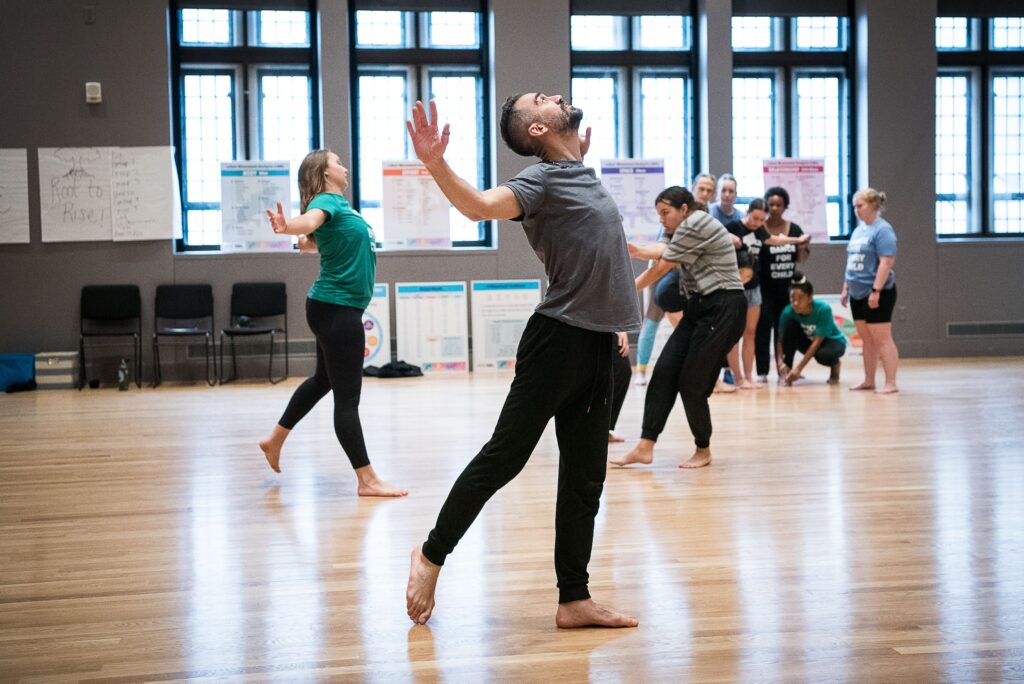DEL Lab Schools Feature: Mher Kandoyan
We’re continuing to spotlight our 2024 DEL Lab Schools recipients. Join us in celebrating Mher Kandoyan!

Photo by Cherylynn Tsushima for Nel Shelby Productions
Mher Kandoyan, a Lebanese-Armenian dancer, multidisciplinary artist, scholar, and educator, is currently pursuing his Master of Fine Arts in Dance at the University of Maryland, and was recognized as a 2024 Arnhold Summer Fellow.
Mher’s latest project, “Journey,” which is an exploration of post-memory, joy and collective healing, earned him a spot in the 40th Annual Choreographer’s Showcase in 2023 at the Publick Playhouse in Prince George’s County, MD. His artistic journey converges at the intersection of dance as a vehicle for expression, exploration, collective healing and community building.
Degendering social dances and creating inclusive pedagogical methods
Mher brings a wealth of experience and passion to his role as a university-level dance educator. Specializing in undergraduate education, he is dedicated to nurturing his students’ growth into accomplished dancers.
Mher takes pride in his innovative approach to dance education, particularly in his efforts to degender social dances and create inclusive pedagogical methods. His teaching philosophy revolves around fostering a supportive and inclusive environment where every student feels empowered to explore their potential as a dancer. With a Teacher’s Heart deeply committed to equity and inclusivity, Mher strives to cultivate a space where all students, regardless of background or identity, can thrive and express themselves through the art of dance.
We asked Mher to answer the following questions:
A. What is one of the biggest learnings or takeaways that has stuck with you from a DEL Course/Workshop?
One of my biggest takeaways is that anybody can dance!
Although obvious, this idea resonates deeply with me since it is also in the core of my teaching philosophy. Regardless of one’s skillset or technique levels, dance is the universal language that our bodies speak. The beauty of it is that everyone has different ways to express the same idea, and DEL reinforces and reminds us to embrace that!
B. How do you apply the DEL Model in your teaching environment? Tell us more about how you use what you’ve learned from DEL in your real life.
The DEL Model is a nuanced pedagogical approach, as it helps students cross certain boundaries that are difficult to overcome.
Breaking down ideas into themes and action words helps students to set certain limitations for themselves, and also enables them to tell a story with their movement.
An example of this is when one of my non-dance major classes had to do their “revolution dance.” Students were confused about where and how to start, however, they collectively collaborated in finding action words that related to the topic, and each group told their story in their own way.
Similarly, breaking down ideas into themes and action words has been a way for me to come up with ideas and movement sentences for my own artistic projects.
C. At the center of the DEL Model is the Teacher’s Heart, which represents the core artistic and philosophical values and beliefs of every dance educator. Mher shared:
Connect, expand, and give!
As a dance educator, I aim to connect with my students on a personal level, as well as establishing connections between them as a group. Connecting individuals is a prerequisite for community building, which is one of my Teacher’s Heart foundations.
Expanding knowledge, connections and relationships is fundamental for the growth of every dancer. What do we become when we stop the process of continued learning?
And for that, as a dance educator, giving lies in my Teacher’s Heart. Giving knowledge, care and empathy for my students to allow them to keep learning and expanding their boundaries.
